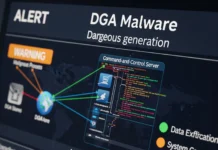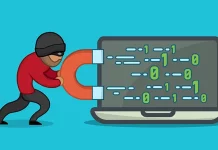Email spam isn’t just a nuisance; it can pose significant risks to your business. From phishing attempts to malware-laden messages, spam can lead to data breaches, financial loss, and a damaged reputation. Knowing how to identify different types of spam is the first step in safeguarding your business’s digital environment.
Utilizing Online Tools to Verify Email Senders
One effective way to combat email spam is by verifying the sender’s identity using online tools. Services like searqle.com allow you to check the legitimacy of an email address by providing detailed information about its owner. These tools can help you distinguish between genuine emails and potentially harmful spam. By simply entering the email address into Searqle, you can access information such as the sender’s name, location, and sometimes even their associated social media profiles. This added layer of verification is invaluable in maintaining a clean and secure inbox, enabling you to quickly filter out dubious emails and focus on what truly matters.
Phishing Emails
Phishing emails are one of the most dangerous forms of spam. They typically appear to be from a trusted source, such as a bank or well-known company, and ask the recipient to provide personal information like passwords or credit card details.
Phishers often use scare tactics to create a sense of urgency, prompting recipients to act quickly without thinking. For example, an email might claim that your account has been compromised and you need to verify your information immediately.
To identify phishing emails, look for generic greetings, mismatched URLs, and spelling or grammatical errors. Always verify the sender’s email address and avoid clicking on any suspicious links.
Nigerian Prince Scams
You’ve probably heard of the infamous Nigerian Prince scam. These emails promise large sums of money in exchange for a small upfront fee or your banking details. While they might seem laughable, they continue to deceive thousands of people each year.
These scams often play on the recipient’s greed or compassion, claiming to need help transferring funds out of a troubled country. The emails are usually poorly written and full of unbelievable claims.
To protect yourself, remember that if something sounds too good to be true, it probably is. Never send money or personal information to unknown individuals.
Lottery and Prize Scams
Lottery and prize scams inform you that you’ve won a significant prize, even though you haven’t entered any contest. To claim your “winnings,” you’re asked to provide personal information or pay a fee.
These emails are designed to excite and manipulate recipients into acting without thinking. They often include official-looking logos and documents to appear legitimate.
Always remember that legitimate lotteries and contests will never ask for payment to claim a prize. Verify the authenticity of the email by contacting the organization directly.
Business Opportunity Scams
Business opportunity scams promise lucrative opportunities for minimal effort, often targeting aspiring entrepreneurs and small business owners. These emails might advertise work-from-home jobs, investment opportunities, or franchise offers.
Scammers use these emails to collect personal information or upfront fees from victims. The opportunities they offer are usually vague or too good to be true.
Research any business opportunity thoroughly before committing. Check for reviews and testimonials, and consult trusted business advisors to ensure the offer is legitimate.
Malware and Virus Emails
Some spam emails contain malicious attachments or links designed to infect your computer with malware or viruses. These emails often appear to be from legitimate sources, such as software companies or customer support services.
The goal is to trick you into downloading an attachment or clicking a link that will install harmful software on your device. This software can steal sensitive information, monitor your activities, or damage your system.
To stay safe, never download attachments or click links from unknown or unexpected emails. Use robust antivirus software to scan all incoming emails and attachments.
Clone Phishing
Clone phishing involves creating an exact replica of a legitimate email from a trusted source and resending it with malicious links or attachments. The email will look identical to the original, making it difficult to detect.
Scammers often use clone phishing for spear-phishing attacks, targeting specific individuals within a company to gain access to confidential information or systems.
Be cautious of any unsolicited emails, even if they appear to be from a trusted source. Verify the email’s authenticity by contacting the sender directly through a separate communication channel.
Image Spam
Image spam uses images instead of text to convey its message, bypassing text-based spam filters. These images often contain embedded links leading to malicious websites or phishing pages.
While image spam can be harder to detect, it’s often characterized by poor image quality, irrelevant content, or excessive use of graphics.
To identify image spam, look for inconsistencies in the email’s design and avoid clicking on any embedded links. Enable email filters that can scan images for malicious content.
Protecting Your Business from Email Spam
Now that you’re familiar with the most common types of email spam, here are some practical steps to protect your business:
- Use Spam Filters: Most email services offer spam filtering options that can automatically detect and block spam emails. Make sure these filters are enabled and regularly updated.
- Educate Employees: Train your team to recognize and report spam emails. Encourage them to verify suspicious emails and avoid clicking on unfamiliar links or downloading attachments.
- Regularly Update Software: Keep your antivirus and email software up to date to protect against the latest threats. Regular updates ensure your system can detect and block new types of spam.
The Importance of Staying Vigilant
Email spam is constantly evolving, and scammers are always finding new ways to bypass security measures. Staying vigilant and informed is crucial to protecting your business from potential threats.
Regularly review your email security practices and stay updated on the latest spam tactics. Encourage open communication within your team to ensure everyone is aware of potential risks and knows how to respond.
Conclusion
Email spam is more than a mere inconvenience; it poses real threats to businesses and individuals alike. By understanding the different types of spam and implementing robust security measures, you can keep your inbox clean and your business secure.
For small business owners and digital marketers, staying informed and proactive is key. Protect your business today by educating yourself and your team on the latest email spam tactics. Together, we can create a safer digital environment for everyone.



































